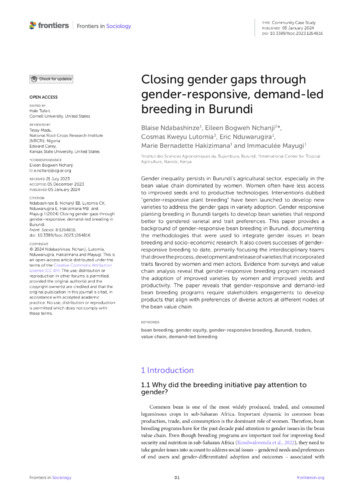Closing gender gaps through gender-responsive, demand-led breeding in Burundi
Gender inequality persists in Burundi’s agricultural sector, especially in the bean value chain dominated by women. Women often have less access to improved seeds and to productive technologies. Interventions dubbed “gender-responsive plant breeding” have been launched to develop new varieties to address the gender gaps in variety adoption. Gender responsive planting breeding in Burundi targets to develop bean varieties that respond better to gendered varietal and trait preferences. This paper provides a background of gender-responsive bean breeding in Burundi, documenting the methodologies that were used to integrate gender issues in bean breeding and socio-economic research. It also covers successes of gender-responsive breeding to date, primarily focusing the interdisciplinary teams that drove the process, development and release of varieties that incorporated traits favored by women and men actors. Evidence from surveys and value chain analysis reveal that gender-responsive breeding program increased the adoption of improved varieties by women and improved yields and productivity. The paper reveals that gender-responsive and demand-led bean breeding programs require stakeholders engagements to develop products that align with preferences of diverse actors at different nodes of the bean value chain.

